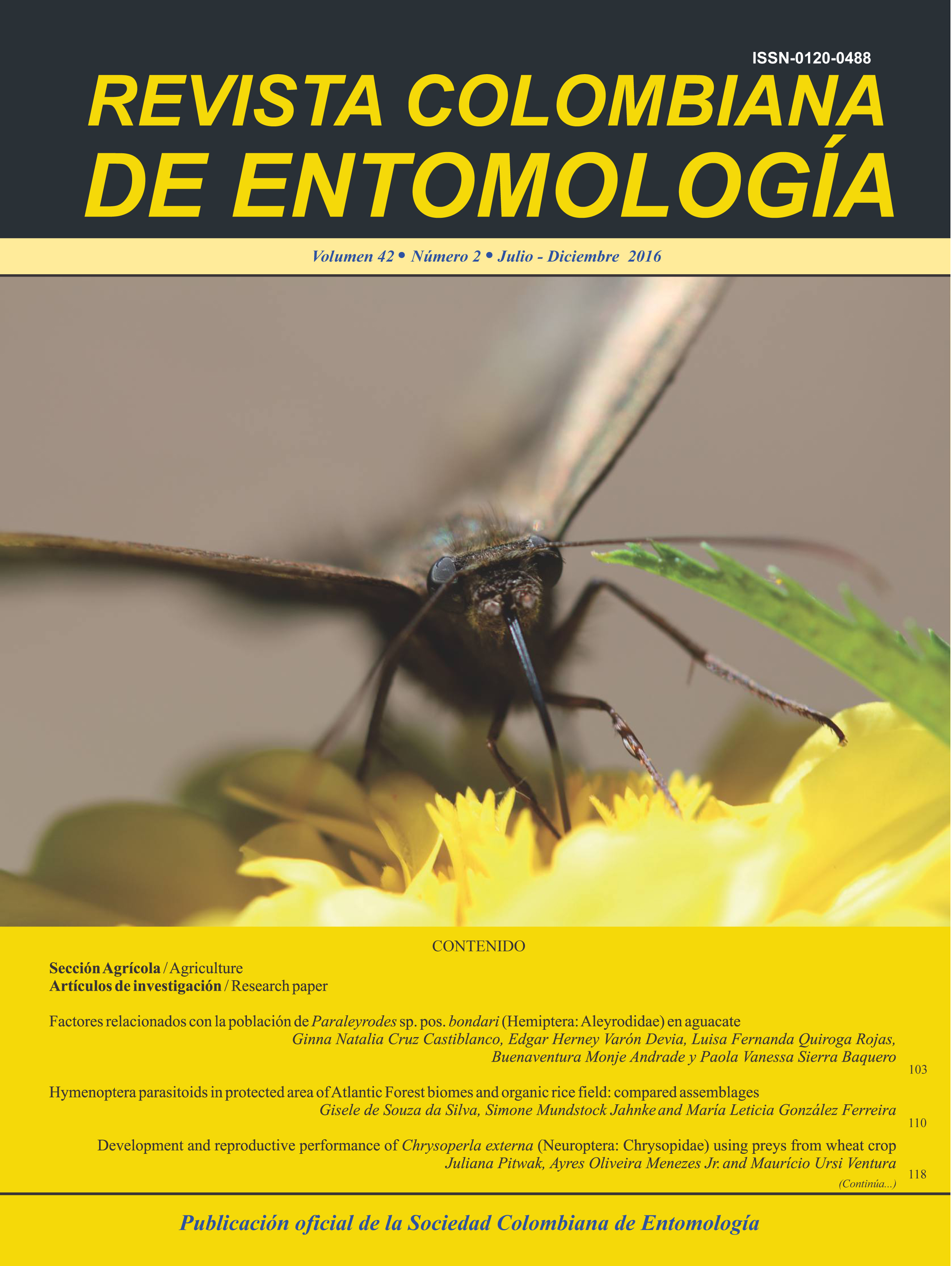Molecular analysis of bacteria associated with refuse dumps of Atta cephalotes (Hymenoptera: Formicidae)
Main Article Content
The composition of bacteria associated with refuse dumps of Atta cephalotes ants living in captivity was investigated using molecular microbiology methods. Eight different bacterial strains were isolated using culturedependent methods; these belonged to the Firmicutes, Proteobacteria and Actinobacteria phyla. According to molecular analysis using polymerase chain reaction-denaturing gradient gel electrophoresis (PCR-DGGE), there were differences in the bacterial communities present in the total fraction (TF, DNA extracted directly from the waste disposal area) and the cultivable fraction (CF, DNA obtained after culturing) of the three A. cephalotes waste disposal areas. However, similarities greater than 60 % were observed between the profiles for the total fraction at the sampling times (0 and 15 days) in two of the waste disposal areas (1H and 3H). The analysis of the DNA sequences obtained from the DGGE bands revealed the predominance of the Proteobacteria, Firmicutes and Bacteroidetes phyla, including five genera (Ralstonia, Burkholderia, Bacillus sp., Enterobacter sp., Myroides sp.) and one group of uncultured bacteria. Bacillus was the most dominant bacterial group in all of the samples analyzed. Some of the genera found have been studied for their potential role in degrading organic matter, promoting plant growth, and acting as antimicrobial agents. This paper provides the first molecular analysis of the bacterial communities associated with refuse dumps of A. cephalotes lab colonies. Our research revealed the presence of consistently associated microbes in refuse dumps; this suggests that resident communities are shaped by the degradation of plant residues and ants. Further research is needed in order to demonstrate function and possible applications.
- Leafcutter ants
- Bacterial diversity
- PCR –DGGE
- 16S rDNA
- Microbiota
Downloads

This work is licensed under a Creative Commons Attribution-NonCommercial-ShareAlike 4.0 International License.
Authors retain the copyright on their work and are responsible for the ideas expressed in them. Once a manuscript is approved for publication, authors are asked for a publication license for the term of legal protection, for all territories that allows the use, dissemination and disclosure of the same.





